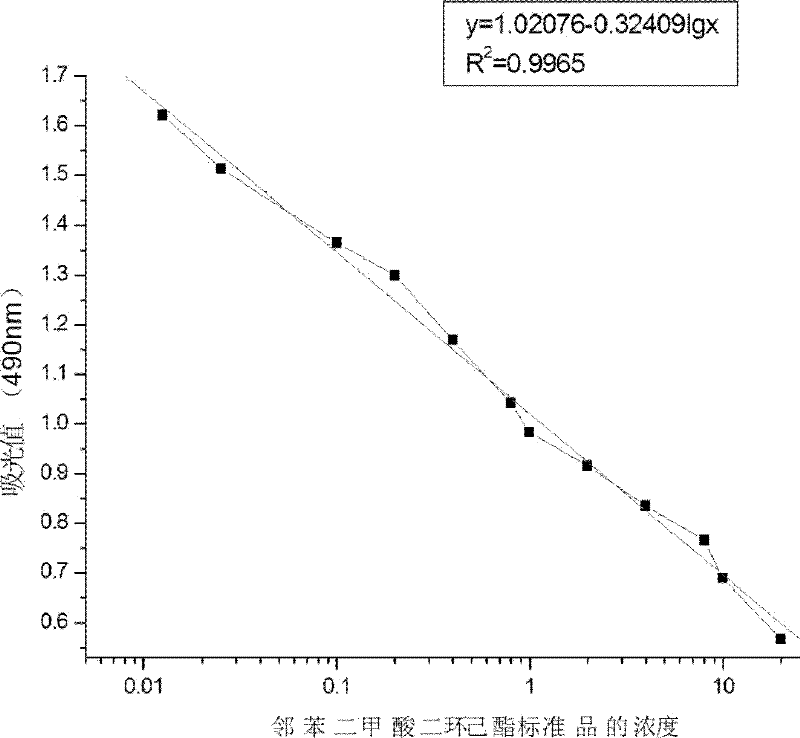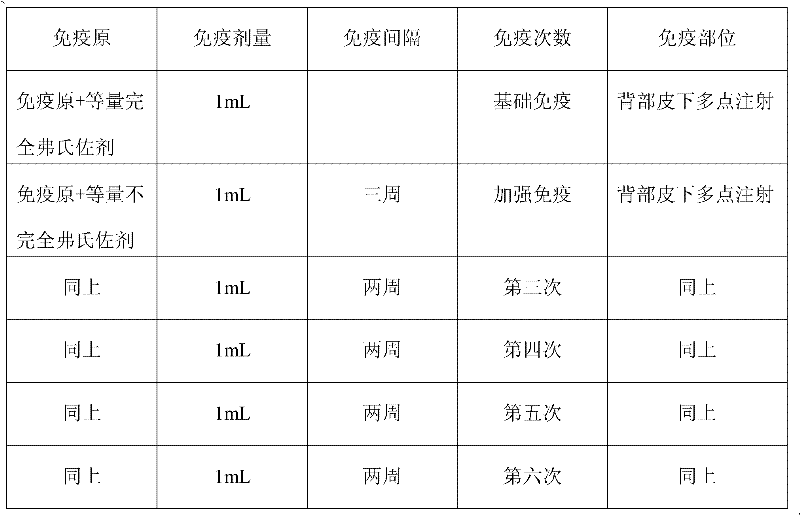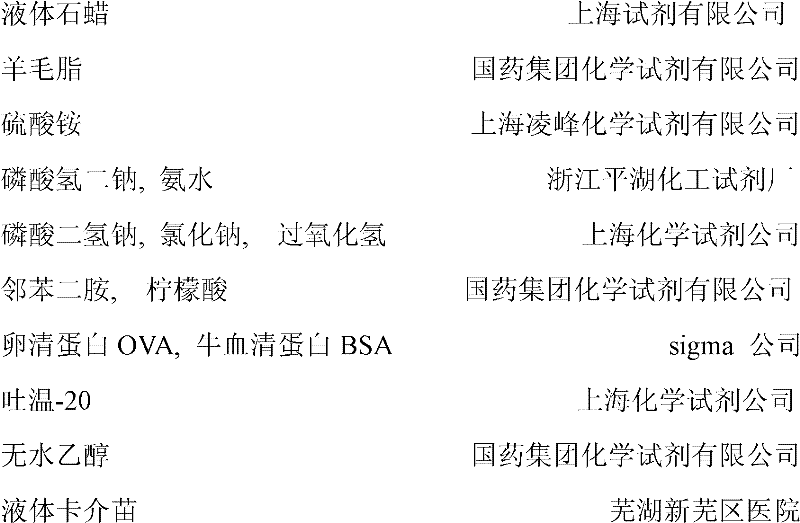Method for detecting dicyclohexyl phthalate in environmental water sample
A technology of dicyclohexyl phthalate and environment detection, applied in the field of analysis, can solve the problems of time-consuming operation, expensive analysis cost, complicated process and the like
- Summary
- Abstract
- Description
- Claims
- Application Information
AI Technical Summary
Problems solved by technology
Method used
Image
Examples
Embodiment 1
[0068] The establishment of the standard curve of dicyclohexyl phthalate:
[0069] (1) Coating steps:
[0070] Coat the 96-well ELISA plate with the coating antigen OVA-DCHP at a concentration of 7 μg / mL, 100 μL per well, place in an incubator for 2 hours at 37°C, take out the ELISA plate, pour out the solution in the well, and add Fill it with washing liquid, let it stand for 3-5 minutes, and then spin it dry, a total of three times.
[0071] (2) Closed steps:
[0072] Then add 1% OVA solution, 150 μL per well, incubate at 37° C. for 30 min, block the excess part not coated with antigen, take it out and wash 3 times as above.
[0073] (3) Competition steps:
[0074] Add 50 μL dicyclohexyl phthalate standard solution and 50 μL dicyclohexyl phthalate enzyme-labeled antibody to each well, and incubate at 37°C for 3 hours, so that the substance to be tested and the solid-phase antigen compete for the enzyme label at the same time. The binding site on the antibody. Then wash ...
Embodiment 2
[0079] The reagents used in this embodiment are prepared according to the following formula:
[0080] The water samples for determination were collected from the Yangtze River water in Wuhu section, Jinghu water in Wuhu City, and tap water and mineral water in this laboratory. For the collection of surface water, glass bottles were used to hold the samples, and the bottles were rinsed with the water to be sampled before filling the bottles. 3 times. After the water sample was collected, it was filtered and extracted first, and then the pH value was adjusted to about 7.0 with 1mol / mL HCl or 1mol / mL NaOH, and stored at 4°C until use.
[0081] (1) Coating steps:
[0082] Coat the 96-well ELISA plate with the coating antigen OVA-DCHP at a concentration of 7 μg / mL, 100 μL per well, place in an incubator for 2 hours at 37°C, take out the ELISA plate, pour out the solution in the well, and add Fill it with washing liquid, let it stand for 3-5 minutes, and then spin it dry, a total ...
Embodiment 3
[0091] Except for the competition step: add 25 μL water sample and 25 μL LDCHP standard solution to each well, then add 50 μL dicyclohexyl phthalate enzyme-labeled antibody, incubate at 37°C for 3 hours, and then wash as above. Except, the rest are the same as implementation 2,
[0092] The result processing is also shown in Table 1:
[0093]
[0094]
[0095] ND a : Samples in which DCHP was not detected
PUM
 Login to View More
Login to View More Abstract
Description
Claims
Application Information
 Login to View More
Login to View More - R&D
- Intellectual Property
- Life Sciences
- Materials
- Tech Scout
- Unparalleled Data Quality
- Higher Quality Content
- 60% Fewer Hallucinations
Browse by: Latest US Patents, China's latest patents, Technical Efficacy Thesaurus, Application Domain, Technology Topic, Popular Technical Reports.
© 2025 PatSnap. All rights reserved.Legal|Privacy policy|Modern Slavery Act Transparency Statement|Sitemap|About US| Contact US: help@patsnap.com



